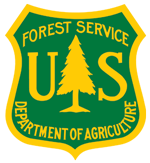Apps, Maps, & Data
Here you will find helpful tools created especially to support the management and conservation of working lands.
Bobscapes
The Bobscapes Mobile App will help researchers better understand population dynamics and help managers direct resources for habitat work to the areas where those investments will be most effective in recovering the species. Additionally, for those interested, the app will connect landowners to technical experts who can make habitat recommendations and share information on voluntary cost share programs. Lastly, the data provided will assist wildlife biologists in creating a national habitat network of “Bobwhite landscapes” necessary to ensure this species persists for future generations!
BirdLocale
USDA’s Natural Resource Conservation Service has partnered with the University of Georgia, Quail Forever, and state agencies to conduct an extensive study across 25 states of the USA to assess the impacts of management practices on the northern bobwhite population. As part of this project, biologists will be collecting field data like bobwhite counts, and percentage cover of different cover types (grass, shrub, forb, etc.). Apart from these human-collected data, these biologists will also be using Acoustic Recording Units (ARUs) to collect data on bird calls.
The Literature Gateway
Forest managers, wildlife conservation groups, policy makers, and other stakeholders often need to review literature on forest bird-vegetation relationships to inform decisions on natural resource management or ecosystem restoration. The literature gateway facilitates the exploration of this literature, helping users find references on a diverse range of management-relevant topics that have been compiled by subject experts based on searches of >60 different sources spanning the past 50+ years.
SE FireMap
The SE FireMap project aims to develop an improved fire mapping system in the Southeastern United States. This cohesive system will track both prescribed fire and wildfire activity on public and private lands and serve as a critical decision support tool to maximize the effectiveness of fire management practices.






















